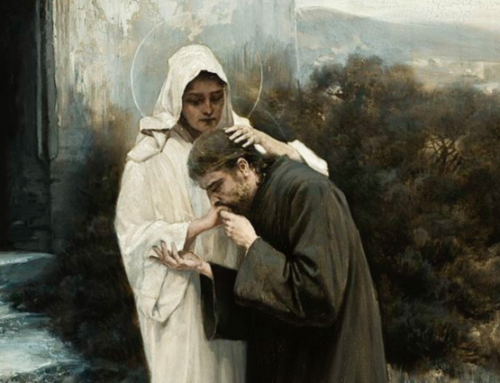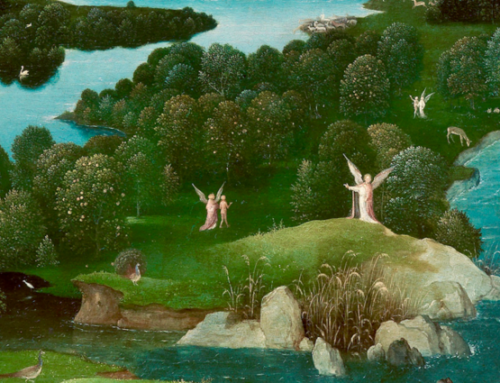When we think of the great classical composers, our mind does not tend to wander too far north. But in addition to the works of Sibelius, Grieg, and Pärt, much great music was composed in the frozen North during the past century that has been unjustly neglected.
 When we think of classical music, we are likely to think of giants such as Bach, Mozart, Beethoven, Schubert, Brahms or Wagner, all of whom are from the German-speaking world, either from Austria or Germany. If we think of opera, Italy will come to mind, especially the names of Verdi and Puccini, though the aforementioned Mozart and Wagner will also feature in our thoughts. It is true that most other countries of Europe can also stake some claim to having contributed to the canon of classical masterpieces: France has Ravel and Debussy, Russia can claim Tchaikovsky and Rachmaninov, whereas Dvorak and Smetana are both Czech; Hungary has Liszt, and Poland can claim Chopin, the great maestro of the piano. As for the anglophone world, England can claim Elgar and Vaughan Williams, and the United States has Gershwin and Copland.
When we think of classical music, we are likely to think of giants such as Bach, Mozart, Beethoven, Schubert, Brahms or Wagner, all of whom are from the German-speaking world, either from Austria or Germany. If we think of opera, Italy will come to mind, especially the names of Verdi and Puccini, though the aforementioned Mozart and Wagner will also feature in our thoughts. It is true that most other countries of Europe can also stake some claim to having contributed to the canon of classical masterpieces: France has Ravel and Debussy, Russia can claim Tchaikovsky and Rachmaninov, whereas Dvorak and Smetana are both Czech; Hungary has Liszt, and Poland can claim Chopin, the great maestro of the piano. As for the anglophone world, England can claim Elgar and Vaughan Williams, and the United States has Gershwin and Copland.
On the other hand, when we think of the great classical composers, our mind does not tend to wander too far north. We will readily acknowledge that Sibelius has a rightful place among the all-time greats, ensuring that Finland is represented, albeit with this solitary voice singing in the tundra, and also that Grieg, the Norwegian, demands recognition; and, in addition, there’s no doubt, in more recent years, that the Estonian minimalist, Arvo Pärt, has nudged himself into the reckoning. Nonetheless, this triumvirate of Northern greats might be considered the exceptions that prove the rule. Other composers from Scandinavia and the Baltic states do not trip readily off our tongues. And yet, even acknowledging that this is so, it will surprise many people to know that much great music was composed in the frozen North during the past century that has been unjustly neglected.
Taking a look at some of these largely undiscovered gems, let’s begin with some of the fine but neglected music composed in Norway, Denmark and Sweden in the twentieth and early twenty-first century, before proceeding to Finland, Estonia and finally to Iceland.
Commencing with three pieces in honour of the Virgin Mary, we will see how these modern compositions owe a great deal to the Western cultural tradition of which they are an integral part. The first is by the Norwegian, Trond Kverno, whose Ave Maris Stella (Hail, Star of the Sea) is a setting of a hymn or antiphon to the Virgin, which has been traditionally sung at Vespers since at least the eighth century. Composed in 1976 for mixed choir, Kverno spices his traditional harmonic approach with hints of dissonance which are subtle enough to avoid violating the composition’s beauty, serenity, and transcendent integrity. The setting of the better-known prayer to the Virgin, the Ave Maria, by the Danish composer Niels la Cour, one of three Latin motets that he composed in 1982, is less adventurous but truly beautiful in its simplicity. The third composition, Mariahymn, by the Swedish composer Fredrik Sixten, written as recently as 2002, differs from the two preceding works insofar as it breaks with the traditional Latin in favour of the vernacular and insofar as it is an original prayer to the Virgin and not the setting of an old text to new music. Very brief, consisting of only four lines of verse, the hymn possesses a poetic beauty, even in translation, asking the Virgin to “water the dry meadow of the soul / with the rivers of your love.”
Before we head east across the Baltic to Finland and thence to Estonia, a nod of due deference is due to Knut Nystedt, arguably the greatest of all Scandinavian composers of sacred choral music during the latter half of the twentieth century. Many of his works could be recommended but the succinct a cappella brilliance of “Cry out and shout” seems to scream for attention. Composed in 1955 and about a minute long, it is both bright and breezy, breathlessly proclaiming, with sheer and muscular exuberance, that “the Lord is strength and song!”
Although any composer from Finland can hardly escape the doom of living permanently in the shadow of the mighty Sibelius, the nation can boast two composers in the last half century who warrant being held in high esteem. The first, Einojuhani Rautavaara, deserves special mention for his Suite de Lorca (1973), a choral setting of the poetry of Federico Garcia Lorca, which evokes olive trees and the warmth of moonlit Mediterranean nights, all a long way from the frozen North. Even better than Rautavaara’s musical setting of Lorca is his compatriot Jaako Mäntyjärvi’s setting of Four Shakespeare Songs. Composed in 1984 when the composer was only twenty-one-years-old, these are truly marvelous. Come Away, Death, from Twelfth Night, is suitably funereal in its somber sobriety without ever descending to the level of a mere dirge. In similar somber vein is Full Fathom Five, from The Tempest, in which the sea-nymphs ring the knell of doom, “ding-dong, bell”, for those believed to have drowned in the storm. Altogether different in mood and tone is Double, Double, Toil and Trouble, the famous incantation of the witches in Macbeth, which is creepy and comic in equal measure, rambunctiously grotesque and devilishly delightful!
If Finnish composers are doomed to live in the shadow of Sibelius, it would be equally true to say that composers from Estonia can hardly hope to escape living in the shadow of the great Arvo Pärt, whose minimalist masterpieces, such as Spiegel im Spiegel and Cantus in Memorium Benjamin Britten, are among the most popular works of the past half century. And what is true of the fate of contemporary Estonian composers is equally true of those composers who preceded Part’s rise to fame. Take, for example, Cyrillus Kreek (1889-1962), whose own considerable reputation has been at least partially eclipsed by the waxing of Part’s presence on the world stage. The best of his work is still performed regularly, however, not least of which are his settings of the Psalms of David, especially his Onnis on inimene (Blessed is the Man), composed in 1923, which interweaves the traditions of Orthodox chant with suggestive elements of Estonian folk music and Western choral influences.
For our final stop on this musical tour of the lands of the North, we’ll wing our way across the Baltic and over Scandinavia, crossing the frozen waters of the Norwegian Sea and following the latitudinal line of the Arctic Circle until we come to Iceland.
Known for its scenic beauty, it would be fair to say that Iceland’s cultural impact rests on the lingering legacy of its Bards, especially Snorri Sturluson, and the heroic sagas they wove about the history of the Norsemen. It would also be fair to say that Iceland is not known for its significant contribution to the canon of classical music. This being so, it seems apt that we should end with three Icelandic composers who present three very different views of the cosmos and the meaning of life. Let’s begin with the youngest, Anna Thorvaldsdottir, born in 1977 and winner in 2012 of the Nordic Council Music Prize, who wrote Pann Heilaga Kross (On the Holy Cross), a haunting meditation on the Crucifixion which is almost elvish in its etherial sensuality. In stark contrast, Haflidi Hallgrimsson’s Veröld fláa sýnir sig (The Deceitful World Shows Itself), composed in 1988, seems almost to be a hymn to despair, or, at the least, a desolate cri de coeur: “The deceitful world shows itself, / foretelling harsh times. / Most of the blades of grass on this / earth, big and small, sting me.” And then, finally, we have Jón Nordal’s Smávinir fagrir (Beautiful Tiny Friends), as different in mood and spirit from Hallgrimsson’s lament as is hope from despair. Written in 1940, when the composer was only sixteen-years-old, it is full of the overflowing spirit of romance which is the domain of youth. Enraptured by the presence of beauty and blissfully oblivious of the far-off echoes of the world war which was raging as he wrote, he thanks the Lord for the beauty of his “tiny friends”, the dandelions and the buttercups: “Poor buttercup, do you see me? / Sleep peacefully and cover yourself, / slow comes the rest in the dewy night, / dream of the light, sleep tight!” Aptly enough, the music that the teenager composed to augment these delicate words is a lilting lullaby, as pure as crystal and as diaphanous as silk.
On this note, let’s bid adieu to these largely unsung friends whom we’ve met on our travels to the top of the world, remembering as our thoughts return to the south that there are northern delights that are aural salves for the soul, soothing the ears as the beauty of the aurora borealis soothes the eyes.
The Imaginative Conservative applies the principle of appreciation to the discussion of culture and politics—we approach dialogue with magnanimity rather than with mere civility. Will you help us remain a refreshing oasis in the increasingly contentious arena of modern discourse? Please consider donating now.
The featured image is courtesy of Pixabay.







Might I suggest the works of Eriks Esenvalds and Rihards Dubra. Both are modern Latvian Composers. I particularly like Dubra’s Te Deum and Esenvalds’ St. Luke Passion as well as The First Tears.